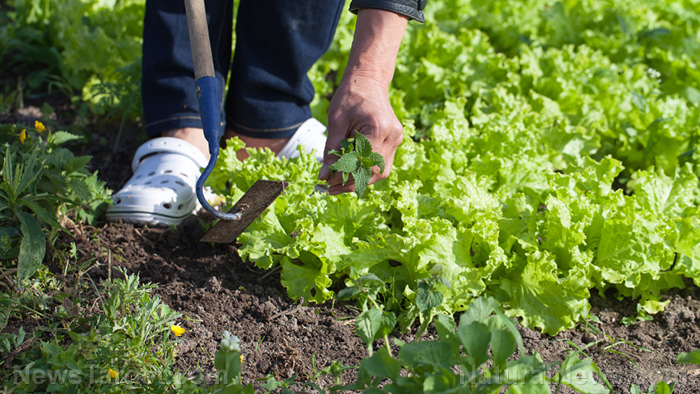Protein-rich and portable emergency foods for your survival stockpile
12/07/2019 / By Grace Olson

Sources of protein are some of the most difficult foods to acquire during an SHTF situation. Common protein sources such as meat and dairy products require special storage and are not easily carried everywhere. However, other great foods are both rich in protein and portable – ideal for bugging out. (h/t to BackdoorSurvival.com)
Add the following foods to your survival stockpile and ensure your body’s strength during an emergency:
1. Beans
Beans are great sources of fiber and protein. Fiber helps make you feel full longer, which is good when food supplies are limited. The rich amount of protein ensures that your bones and muscles are in tip-top shape for any emergency.
Some beans include chickpeas, cranberry beans and kidney beans. It’s possible to prepare them beforehand, so you can eat them easily once SHTF.
Beans need to be pre-soaked first before you can eat them. You may not have that time during an emergency, so you’re better off dehydrating them. If you don’t have a dehydrator, pop them in the oven instead. In this way, you can easily pack them in your bugout bag without losing their nutritional benefits.
2. Nuts and seeds
There are many varieties of nuts and seeds you can stock up on. Some of these include sunflower seeds, pecans, almonds and walnuts. These foods make great snacks-to-go and can easily be added to meals for a nutritional boost.
When storing nuts and seeds, containers should be airtight and the storage area needs to be cool. If you crush the seeds, you can produce flour for baking.
If you are traveling through a hot area, make sure to consume them immediately. Nuts and seeds go rancid in hot weather and may give you an upset stomach instead.
3. Chia seeds
Chia seeds are popular superfoods. Aside from being packed with protein, they are also rich in polyunsaturated fats, calcium and zinc. These seeds can help lower bad cholesterol and regulate blood sugar levels.
There are a lot of foods you can make with chia seeds. One example is mixing them with your meals. If you’re having rice or oatmeal, simply add a teaspoon or so for a protein boost.
You can also make a quick dessert called chia gel. Simply mix ¼ cup of chia seeds in one cup of water and let it sit for 15 to 20 minutes.
Another dessert is chia pudding. In this recipe, mix chia seeds with one cup of your choice of milk. Add some dried fruits or nuts for topping.
4. Freeze-dried eggs or meat
Freeze-drying is a popular food preservation method among preppers. In this method, the machine removes all the moisture from the food, making its shelf life last significantly longer. You only need to add some water to rehydrate it before you can consume it. If you can’t afford to spare some water, you can always eat them as is.
Some foods that you can preserve with freeze-drying are meat and eggs. Cut them thinly to make them fit into the machine. After freeze-drying, place them in tightly sealed bags or airtight containers to preserve them properly.
5. Protein powder
When picking food supplies for your survival stockpile, one of the key rules is choosing the powder form of food. Protein powders are a convenient, easy-to-prepare way to get your necessary intake of protein. Simply follow the instructions on the container. Additionally, manufacturers usually add other nutrients, like vitamins and minerals, for an extra boost. If someone gets sick, offering protein powder drinks is a convenient way to give them a nutritional boost.
Protein powders usually last up to two years. However, when stored right, they can last longer. (Related: Why your storable food supply might cause you to starve to death.)
When it comes to protein, don’t limit yourself to dairy products. A lot of fruits, vegetables and supplements are packed with protein and are lighter compared to tuna or meat cans. When preparing for an SHTF situation, remember: You have to eat smart.
Sources include:
Tagged Under: beans, bug out, chia seeds, clean food, emergency food, Food storage, food supply, freeze drying, functional food, Gear, how-to, nuts, preparedness, prepping, protein, protein powder, seeds, supplies, survival, survival food
RECENT NEWS & ARTICLES
FoodStorage.News is a fact-based public education website published by Food Storage News Features, LLC.
All content copyright © 2018 by Food Storage News Features, LLC.
Contact Us with Tips or Corrections
All trademarks, registered trademarks and servicemarks mentioned on this site are the property of their respective owners.


















